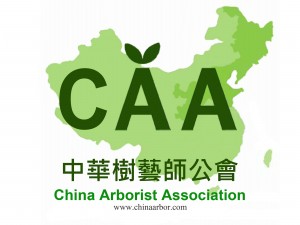CAA (Professionals) — Phllinus noxius (有關 “褐根病” 的反思) :
國內和台灣的朋友, 請查閱 www.chinaarbor.com 或 “臉書” Facebook (帳號是 “中華樹藝師學會”) 以取得其他文章。 本會的已發表文章都已放棄版權, 任何人可以自由轉載作為教育目的, 但不能作為商業目的盈利。 任何人都可以申請加入本會, 會費全免, 會員名單從不公開。 有意者請將真實姓名、年齡、單位、職銜、最高學歷、電郵地址、和手機號, 電郵到 egc@netvigator.com , 或傳真到+ 852-2679-5338 等待處理。 本會所發表的一切內容, 謹供參考, 並不接受任何責任, 敬請留意。
會員們:
近十年來,華南地區掀起一遍 "褐根病" (Phellinus noxius) 的熱潮,先從台灣開始,香港繼而抄襲,古樹大樹的倒塌都經常相引與 "褐根病" 有關,更有人把它稱作 “樹癌” ,得到了它必死無疑。
"褐根病" 是否真的那麼厲害? 是否真的無藥可救?
CAA 在2004年開始成立的時候,從經常接觸的國際樹藝研究文獻裡,從來沒有聽過 "褐根病" 這個名字,算在美國國際樹木學會的兩月刋 “樹藝新聞” 裡,也從來沒有看過關於 "褐根病" 的詳盡報導,但有關其他 “根腐病” 和真菌的文章則有幾篇。
假如在 “谷歌” 搜尋裡打上 Phellinus noxius兩個字,出來的研究文章也是廖廖可數,而且大部份都源自台灣學者。
CAA相信一個真菌種的產生,不會是十年八年的事,從台灣以外的文獻可以看到 (http://www.issg.org/database/species/ecology.asp?si=1007, https://www.daff.qld.gov.au/forestry/pests-and-diseases/phellinus-noxius-brown-root-rot ) ,"褐根病" 的病原體,也分佈於全球各地,那是否其他地方的樹木就不患此病,還是其他地方包括所有西方國家,沒有興趣或能力去研究此病?
作為一個樹藝師,我們接受的教育告訴我們,泥土裡面的微生物,包括真菌在內,實在是存在族群競爭的,真菌的勊星也包括其他真菌、放射線菌、線虫和其他,微生物對樹木的攻擊經常存在接力賽,由某一個病原體開始,也可能經過多個病原體的努力,把樹木的抵抗力抑制到無力抵抗的時候,再由風力來給樹木給予最後一擊,令它倒塌。 如果這現象只歸咎到單一品種,這最好在抽驗屍體的時候,完全沒有發現有任何其他病原體的存在,才好說出。
在同一種植區裡,為何有些樹木感染 "褐根病",但旁邊的又沒有呢?
目前似乎很多人採用防治 "褐根病" 的方法有泥土薰蒸和根部隔離的方法。 作為一個樹藝師,我們會問兩種做法能夠避免昆蟲、鼠類、雨水或候鳥的間接傳播嗎? 如果只用殺菌藥是有效的話,用了十年以上,又能救回多少生病的樹?
香港目前似乎在盲目跟風,"褐根病" 已變成十惡不赦的頭號樹木殺手,不問根由。
香港是否真的沒有人才,還是人才一定要打壓下去?
謹此致意!
中華樹藝師學會 會長 (www.chinaarbor.com)
歐永森
ASCA 美洲顧問樹藝師學會顧問樹藝師號 RCA#497 (http://isahkchina.blogspot.com/2010/12/isa-hkchina-rac-in-asia.html)
IACA 澳洲顧問樹藝師學會顧問樹藝師號 ACM 0412011 (www.iaca.org.au)
ISA 資深樹藝師/註冊攀樹師號 HK-0174BT (http://isahkchina.blogspot.com/2011/03/isa-hkchina-frist-bcma-in-asia.html)
ISA HK/China 執業樹藝師號 IPA-010908 (http://isahkchina.blogspot.com/2010/04/isa-hkchina-tree-news-1441-report.html)
ISA 認證“樹木風險評估員” (www.isa-arbor.com )
SCMN 專業調解及談判學會註冊調解員號 CM-0044 (http://isahkchina.blogspot.com/2012/01/isa-hkchina-mediation.html)
“如果樹木在設計和種植時犯錯,其護養必然昂貴,而最終也會變成"不定時炸彈" 。 ”
“速成出來的樹木評估員, 只能作出低質量的猜測。 大自然會決定成敗。 ”
------------------------------------------------------------------------------------------------------------------------------------------------------------------------------------------------------
国内和台湾的朋友, 请查阅 www.chinaarbor.com 或 “脸书” Facebook (帐号是“中华树艺师学会”) 以取得其他文章。 本会的已发表文章都已放弃版权, 任何人可以自由转载作为教育目的, 但不能作为商业目的盈利。 任何人都可以申请加入本会, 会费全免, 会员名单从不公开。 有意者请将真实姓名、年龄、单位、职衔、最高学历、电邮地址、和手机号, 电邮到 egc@netvigator.com , 或传真到 +852-2679-5338 等待处理。 本会所发表的一切内容, 谨供参考, 并不接受任何责任, 敬请留意。
会员们:
近十年来,华南地区掀起一遍 "褐根病" (Phellinus noxius) 的热潮,先从台湾开始,香港继而抄袭,古树大树的倒塌都经常相引与 "褐根病" 有关,更有人把它称作 “树癌” ,得到了它必死无疑。
"褐根病" 是否真的那麽厉害? 是否真的无药可救?
CAA 在2004年开始成立的时候,从经常接触的国际树艺研究文献里,从来没有听过 "褐根病" 这个名字,算在美国国际树木学会的两月刋 “树艺新闻” 里,也从来没有看过关於 "褐根病" 的详尽报导,但有关其他 “根腐病” 和真菌的文章则有几篇。
假如在 “谷歌” 搜寻里打上 Phellinus noxius两个字,出来的研究文章也是廖廖可数,而且大部份都源自台湾学者。
CAA相信一个真菌种的产生,不会是十年八年的事,从台湾以外的文献可以看到 (http://www.issg.org/database/species/ecology.asp?si=1007 , https://www.daff.qld.gov.au/forestry/pests-and-diseases/phellinus-noxius-brown-root-rot ) ,"褐根病" 的病原体,也分佈於全球各地,那是否其他地方的树木就不患此病,还是其他地方包括所有西方国家,没有兴趣或能力去研究此病?
作为一个树艺师,我们接受的教育告诉我们,泥土里面的微生物,包括真菌在内,实在是存在族群竞争的,真菌的勊星也包括其他真菌、放射线菌、线虫和其他,微生物对树木的攻击经常存在接力赛,由某一个病原体开始,可能经过多个病原体的努力,把树木的抵抗力抑制到无力抵抗的时候,再由风力来给树木给予最後一击,令它倒塌。 如果这现象只归咎到单一品种,这最好在抽验屍体的时候,完全没有发现有任何其他病原体的存在,才好说出。
在同一种植区里,为何有些树木感染 "褐根病",但旁边的又没有呢?
目前似乎很多人采用防治 "褐根病" 的方法有泥土薰蒸和根部隔离的方法。 作为一个树艺师,我们会问两种做法能够避免昆蟲、鼠类、雨水或候鸟的间接传播吗? 如果只用杀菌药是有效的话,用了十年以上,又能救回多少生病的树?
香港目前似乎在盲目跟风,"褐根病" 已变成十恶不赦的头号树木杀手,不问根由。
香港是否真的没有人才,还是人才一定要打压下去?
谨此致意!
中华树艺师学会 会长 (www.chinaarbor.com)
欧永森
ASCA美洲顾问树艺师学会 顾问树艺师号 RCA#497 (http://isahkchina.blogspot.com/2010/12/isa-hkchina-rac-in-asia.html)
IACA澳洲顾问树艺师学会 顾问树艺师号 ACM 0412011 (www.iaca.org.au)
ISA资深树艺师/注册攀树师号 HK-0174BT (http://isahkchina.blogspot.com/2011/03/isa-hkchina-frist-bcma-in-asia.html)
ISA认证 “樹木风险评估员” (www.isa-arbor.com)
ISA HK/CHINA执业树艺师号 IPA-010908 (http://isahkchina.blogspot.com/2010/04/isa-hkchina-tree-news-1441-report.html)
SCMN专业调解及谈判学会 注册调解员号 CM-0044 (http://isahkchina.blogspot.com/2012/01/isa-hkchina-mediation.html)
“如果树木在设计和种植时犯错,其护养必然昂贵,而最终也会变成 "不定时炸弹" 。 ”
“速成出来的树木评估员, 只能作出低质量的猜測。 大自然会决定成败。 ”
--------------------------------------------------------------------------------------------------------------------------------------------------------------------------------------------------
*** Our weekly Station Mail is for the information of Station Members only, but Station Mail has given up copyright & can be freely circulated. For administrative reasons, comments from outsiders are usually not entertained, & may be circulated within our system locally & overseas. Anyone can join us by providing their full name, age, organization, position, highest education, email & mobile no. to egc@netvigator.com . Joining is free & withdrawal is at an email notice. Station Membership is never publicly disclosed. Please also check our new website of www.chinaarbor.com for other good information, or in Facebook (at ‘China Arborist Association’), although images are sometimes not attached due to size. All our information is given for reference only without any commitment or liabilities. ***
Dear Station Members,
Phellinus noxius has become a popular study in Taiwan & HK recently. HK appeared to be copying from Taiwan on it lately.
If one would care to google search this root rotting pathogen, one may find that it is rarely reported or documented outside Taiwan & HK. This disease appeared to be specific by selective favouritism by some govt agencies as a major cause of tree failure in these two places.
It is unlikely that a newly discovered pathogen would be born out of a few years on earth. It is also unusual that western research would pay little attention to it, if it is a major contribution to tree failure. The fact is that this pathogen is not widely studied or reported in research in western countries. Then why is it so popular that it deserves so much funding to spend on it in Taiwan & HK?
As an arborist, we have studied that soil microorganisms would exist in a state of competition within the soil. Species would try to suppress others in order to thrive. Then is Phellinus noxius so powerful that all other soil microorganisms have to give way to it, to let it become the only champion in the soil? Any scientific proof ?
The popular treatment for this disease appeared to be soil fumigation or roots separation by physical means in Taiwan & HK. Then what about the insects, rats, birds or even rain water which may transmit the pathogen from one place to the disinfected area? Is the current practice effective? Or just costly?
Also why is that the other trees in the same planting area do not contract the disease, when one is found with it? Does the pathogen favour one tree & not the others? Any scientific reason?
Or are there other commercial or political reasons to erect this disease for money & prestige?
best regards,
Sammy Au
Founding President (Station Manager) of China Arborist Association (www.chinaarbor.com)
ASCA Registered Consulting Arborist no. RCA#497 (http://isahkchina.blogspot.com/2010/12/isa-hkchina-first-rca-in-asia.html)
IACA Institute of Australian Consulting Arboriculturists Accredited Member no. ACM 0412011 (www.iaca.org.au)
ISA Board Certified Master Arborist / Certified Tree Worker no. HK-0174BT (http://isahkchina.blogspot.com/2011/03/isa-hkchina-first-bcma-in-asia.html)
ISA Tree Risk Assessment Qualified (www.isa-arbor.com)
ISA HK/China Independent Practicing Arborist no. IPA-010908 (http://isahkchina.blogspot.com/2010/04/isa-hkchina-hk-tree-news-14410-report.html)
SCMN Certified Mediator no. CM-0044 (http://isahkchina.blogspot.com/2012/01/isa-hkchina-mediation.html)
"Providing treatment without in-depth diagnosis & research support is professional misconduct. "
"Casual tree assessor delivers wanton tree assessment. Mother Nature makes the rules."

Comments are closed.